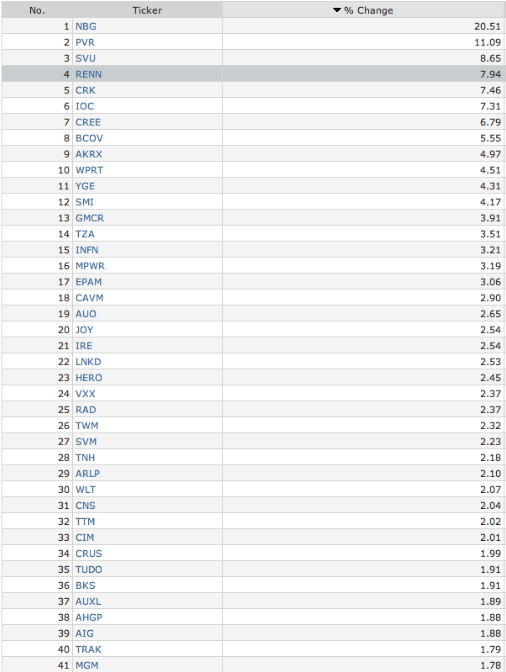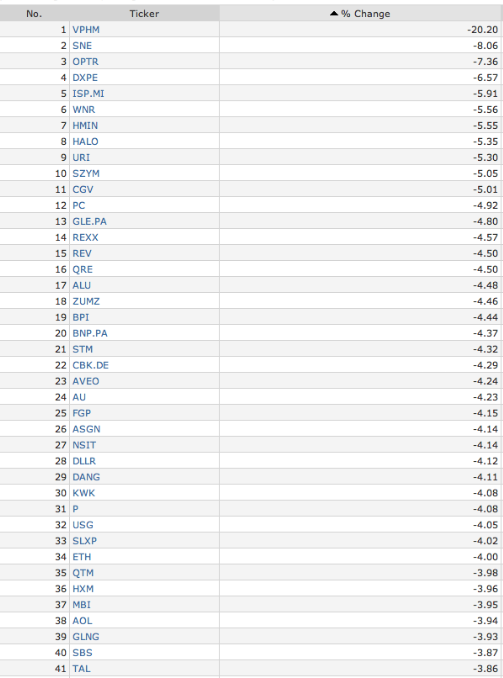Source
“Bob Janjuah, who has been quiet lately (recall his last piece in which he quite honestly told everyone that “Markets Are So Rigged By Policy Makers That I Have No Meaningful Insights To Offer“), is out with his latest, in which he gives us not only his long-term preview, “ultimately I still fear and expect the S&P500 – as the global risk-on/risk-off proxy – to trade at 800, and the Dow/Gold ratio to hit parity (currently at 8, down from an all-time high of 45 in late 1999) before we can begin the next multi-decade bull cycle“, but also his checklist of 8 things to look forward to in the short-term centrally-planned future.
From Nomura’s Bob Janjuah
Please sir, can I have some more?
The current monetary policy settings in the US and Europe – which in my last note I dubbed monetary anarchy – continue to drive markets. While some may feel that central bank behaviour and experimental policies designed largely to boost markets is a good and desirable thing, I have little doubt that such ‘economic policies’ are already sowing the seeds of our next economic and markets malaise. I continue to believe strongly in the view that central bankers are intentionally mispricing the cost of capital, in an attempt to push the private sector to misallocate capital into consumption and into asset purchases at the wrong time and at the wrong price. Eras of such marked misallocations of capital normally end with bubbles that burst significantly. Central banks have shown us, time and again, that they are extremely good at driving bubble formation, that they are extremely good at denying their real motivations, and that they are extremely good at denying the existence of bubbles. History of course also shows us, over and over again, that bubbles are the direct consequence of central bankers mispricing capital, and history of course shows us that central bankers are largely impotent when it comes to preventing the significant bursting of said bubbles.
I think pump-and-dump policies, which have driven the Western cycles of print/borrow/consume over the last 20 years – and in particular over the last 10 years – are an undeniable economic failure. What is even more concerning to me is that, even after everything we have been through, the policymaker solution for our current sickness is more of the same – more debt, more liquidity, and more consumption! The West is in the midst of a multi-year era of declining living standards, in large part as a direct consequence of central bankers and their bubble blowing machines. I think sometimes those focused on markets and how to make the next buck out of the Fed/ECB ‘put’ should remember that, for example, it is at least in some part as a direct consequence of the Greenspan and then the Bernanke policy ‘puts’ that tens of millions of American citizens are either homeless and/or on food stamps. When the current post-2008/09 bubbles burst, central bank ‘puts’ and the arrogance we perceive that still persists in some parts of the financial sector will hopefully be consigned to the deep freeze box for a very long time.
Moving onto the more tangible near term:
1 – The extremely bullish seasonal and weather factors that in my view have artificially boosted (US) data over the 3-4 months to end-March are now over, and over the next 3-4 months are I feel instead going to be a material drag. It has already started, and by late Q2/early Q3 the eco bulls will I feel, once again, be left scratching their heads. For 2012, trend growth in the US will, in my opinion, be closer to 1.5% than 2.5%.
2 – The US consumer is in a weak and vulnerable position. Savings have been run down, to worryingly low levels, house prices are still falling, but the jobs picture is already turning down and gasoline prices are up nearly 20% from the December lows – and rising.
3 – The earnings season, which is about to start, will in my view be average at best – and this is merely a continuation of an already weakening trend, where weakness is actually quite significant outside of a very small single handful of individual companies.
4 – Now that we have moved on from the systemic crisis in the eurozone, it is now becoming clear to an increasing number of people that we have merely swapped a dramatic V-shaped collapse-followed-by recovery for a long-drawn-out period of weak growth. In my view, the eurozone will – at best – contribute nothing to global growth, perhaps for the next 3 to 5 years. If Spain ends up as the next Greece, then the picture will, in my view, be much worse.
5 – China is definitely ‘landing’, and policy easing is well behind the street’s expectations. I continue to have little doubt that China is transitioning from a 10% growth economy to a 7% growth economy this year. And over the next 3-5 years, that growth rate could be closer to 5% or less. I remain concerned at how little focus is given to the very poor demographics in China, and I remain concerned at how little focus there is on the state of the ‘banking’ balance sheet in China, and on the true levels of underlying indebtedness that exists in the Chinese economy.
6 – Over the next quarter or two I think there is unlikely to be any more money magic from the ECB – unless of course Spain really implodes. But in my view the market seems transfixed by Bernanke and his throw away promises. I remain convinced that we will NOT see any new real QE this year. Why? Simply put, more QE in the US would merely take gasoline prices up, perhaps by another 20%. This would, in my view, guarantee an abrupt halt to growth in the US and would likely ensure an Obama electoral defeat. This is not an outcome that Bernanke would desire. So at best, either in the June or July meeting, we will get some form of TWIST.
7 – Over the next few weeks we could see the ratings agencies move towards a wholesale downgrading of the global banking sector, driven by the application of new ratings methodologies. The markets seem extremely complacent on this issue.
8 – I assume no international military conflict in Iran.
So in essence, reflecting the economic truism that is ‘MV = YP’, I still see a world and markets more driven by the ‘M’ rather than the ‘V’ – and in Q2, more shots of ‘M’ are going to be elusive and ultimately what will actually be delivered will fall well short of market expectations. Also in Q2 the data (earnings and economic) will likely be weak. And in particular, the consumer is going to struggle and will I think be forced to re-save. Put all this together and I think in Q2 we should expect a nice 10% equity sell-off, with the S&P500 falling from 1420 (+/-20) to 1280 (+/-20). Credit should continue the sell-off of the last few weeks (iTraxx Crossover up at 750/800), and rates should rally with 10-year UST yields back below 2%, perhaps even down at 1.75%.
As we get later into Q2 I think the shrill promises of more fixes of ‘M’ from Bernanke will get loud, and many investors remain underweight risk, having missed out on Q1. As such, the expected correction should not exceed 10%. Over late Q2 and Q3, we could – likely should – see another leg higher in risk, driven by TWIST. This shot of ‘M’ may have a very short half-life in terms of boosting markets – four to six months perhaps – with the presidential elections clearly being the target. Much beyond early Q4 I think things will look extremely challenging, with the lack of self-sustaining growth/end demand, the lack of growth in Europe, weakening EM growth and the US fiscal debate being the key agenda items. I continue to believe that while equity prices may surprise on the upside in Q3/into the US elections, late Q4/early 2013 and the (lack of) growth and US fiscal stories could herald the next stage of the post-2008/09 ‘M’ bubble, i.e., the next major equity bear market.
Clearly fiscal and central bank activism and experimentation have, to date, succeeded in stretching out the cycle, but ultimately I still fear and expect the S&P500 – as the global risk-on/risk-off proxy – to trade at 800, and the Dow/Gold ratio to hit parity (currently at 8, down from an all-time high of 45 in late 1999) before we can begin the next multi-decade bull cycle. I think the battle between central bank inflationist policies and the natural cycle of deflationary debt deleveraging will continue to be attritional, and it may drag well into 2013 and 2014. I do however remain hopeful that in the next 12-24 months we will see both the basis form for the next major multi-year cycle of global economic development and we will see risk asset valuations at truly ‘once in a lifetime’ cheap levels. We are not yet at this point.”
Comments »


